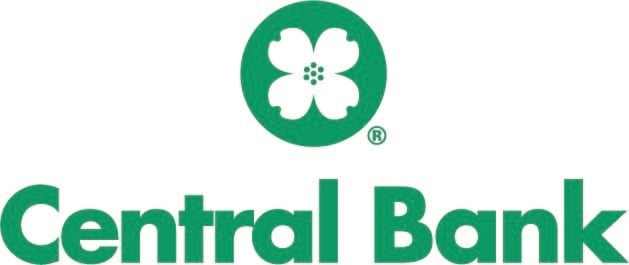A Beginner’s Guide to Mortgage Refinance👉 Did you buy a home in 2023? Refinancing might save you money — mortgage rates are down a percentage point compared to last year’s peak. See mortgage rates this week and try our refinance calculator to see how much you could save.
How to find today’s mortgage refinance rates
NerdWallet’s handy tool can help you compare current refinance rates for your mortgage. In the filters above, click or tap "Refinance" and enter a few details about your home loan. Then, we’ll scan multiple lenders to provide you personalized rate quotes within moments — no credit check required.
How do you get the best mortgage refinance rate?
Estimated closing costs and other fees.
You can control a few things that have a big impact on your personal interest rates. These include:
Your credit score: In terms of factors you can alter, your credit score is front and center for influencing the refinance rate you will receive. Check your credit report before refinancing to make sure there aren’t any errors. Build your credit score before refinancing by paying your bills on time and keeping credit utilization low.
How much debt you have: For a conventional loan refinance, lenders usually want a debt-to-income ratio of no more than 36%. Your DTI is the amount of debt you pay each month divided by your gross, or pre-tax, monthly income.
The type of refinance can also affect your interest rate. Lenders generally consider cash-out refinances to be the most risky, because you borrow against home equity and take out a larger loan. As a result, cash-out refinances tend to have higher interest rates than rate-and-term refis.
Finally: When you pick a lender, lock in your refinance rate. Rates go up and down daily, and a rate lock will prevent the interest rate you've been offered from rising before your loan closes.
But what if rates keep going down after your rate lock? Ask if your lender offers a “float down” option, which will protect you if rates take a downward turn.
How does a mortgage refinance work?
With a mortgage refinance, you replace your current home loan with a new one. Much like when you bought your home, you’ll have to meet the lender’s refinance requirements and go through the application and closing process.
How much does it cost to refinance a mortgage?
You don't make a down payment when you refinance, but refinancing isn't free. You'll pay refinance closing costs, which generally run from 2% to 6% of the amount of your new loan. For example: If you're refinancing $250,000, your closing costs could be between $5,000 and $15,000.
Closing costs on a refinance include:
Some lenders offer no-closing-cost refinances. With these loans, you don’t have to pay the closing costs upfront, but you will pay them one way or another. Lenders cover the cost by charging a higher interest rate or rolling the fees into the loan amount. Increasing your loan amount bumps up your monthly payment and total interest.
How long does it take to refinance a mortgage?
Refinancing takes at least four to six weeks. It takes time to go through underwriting and for the lender to get an appraisal. In most instances, this isn't a big deal; it's not like you're waiting to move. But if you’re looking to tap into equity to fix something urgent, a refi may not be your best bet. Depending on the amount you need, you might consider another way to finance major home repairs or renovations.
When should you refinance your mortgage?
There are several reasons you might choose to refinance your mortgage. In some cases, you may be able to accomplish multiple goals at once: for example, switching loan types and changing the loan's term.
You might refinance in order to:
Lower your interest rate. If rates have dropped since you bought your home or your credit score has improved, a rate and term refinance may allow you to reduce your monthly mortgage payment. A lower interest rate could also save you a considerable amount of cash over the life of the loan.
Pay off your mortgage quicker. You can pay off your loan faster by refinancing from a 30-year mortgage to a 15-year mortgage, for example. While your monthly payments will rise, shortening your loan term could dramatically reduce the amount of interest you'll pay.
Tap into your home equity. With a cash-out refinance, you take out a new mortgage for more than your current loan balance. You receive the difference between the two amounts in cash, which you can use as you like. A cash-out refinance can be risky because you're getting a larger loan with your home as collateral, so it's generally considered safest to use the proceeds for something that improves your bottom line. For example, a major renovation could add to your home's value.
Switch from an adjustable-rate to a fixed-rate mortgage. If you want more payment stability, you can refinance your adjustable-rate mortgage to a fixed-rate mortgage. After a specified amount of time, the rate on the ARM may adjust higher, while the rate stays the same with a fixed-rate loan.
Eliminate private mortgage insurance. If you bought your home with less than 20% down on a conventional loan, your lender likely required you to take private mortgage insurance, or PMI. This protects the lender in the event you default on the loan. If you’ve gained enough equity in your home, you can refinance to eliminate the PMI. However, it may make more sense simply to pay for an appraisal to cancel your mortgage insurance early.
Cancel FHA mortgage insurance. Refinancing is usually necessary to remove FHA mortgage insurance, which is determined by the amount of your down payment, not your equity. Going from an FHA loan to a conventional loan allows you to drop FHA mortgage insurance. But be sure you'll have at least 20% equity, so you don't end up paying private mortgage insurance.
Add or remove a borrower from the loan. Changing who's on the mortgage doesn't alter who owns the property — that's what the title or deed is for — but it does affect who's on the hook for the home loan. Generally, if you want to remove someone from your home loan and that person is still living, you'll have to refinance. (This could be necessary in a divorce, for instance.) Note that the person or people remaining on the loan will need to be able to qualify for the refi without that other borrower. It's a similar process to add someone to the mortgage: The new person will need to qualify along with the current borrower.
At what interest rate should you refinance?
There isn’t a standard rule about when it makes sense to refinance your mortgage. Some experts recommend refinancing if you can lower your mortgage rate by 1% or more. But a smaller drop may still make sense for you. Crunch the numbers with NerdWallet’s mortgage refinance calculator.
When deciding if you should refinance, consider how much longer you plan to stay in your home. If you plan to move soon, you might not have time to recoup the costs of refinancing, sometimes called the break-even point. You break even on a refinance when the money saved from refinancing outweighs how much you spent on closing costs. Note that if saving money isn't your primary refinancing goal — for example, if you're taking cash out — this isn't a helpful metric.
Finally: Ask your lender about any prepayment penalties. While these penalties aren’t common, some lenders may charge them if you pay off the loan within the first three to five years of a mortgage. This penalty might apply if you pay off your existing loan while refinancing to a new one.
Learn more about refinancing your mortgage:
About the author: Kate Wood is a mortgages and student loans writer and spokesperson who joined NerdWallet in 2019. With an educational background in sociology, Kate feels strongly about inequality in homeownership and higher education.
Check out our other mortgage and refinance tools
Explore more quotes
Refinance rates by loan type
Mortgage and refinance rates by state










